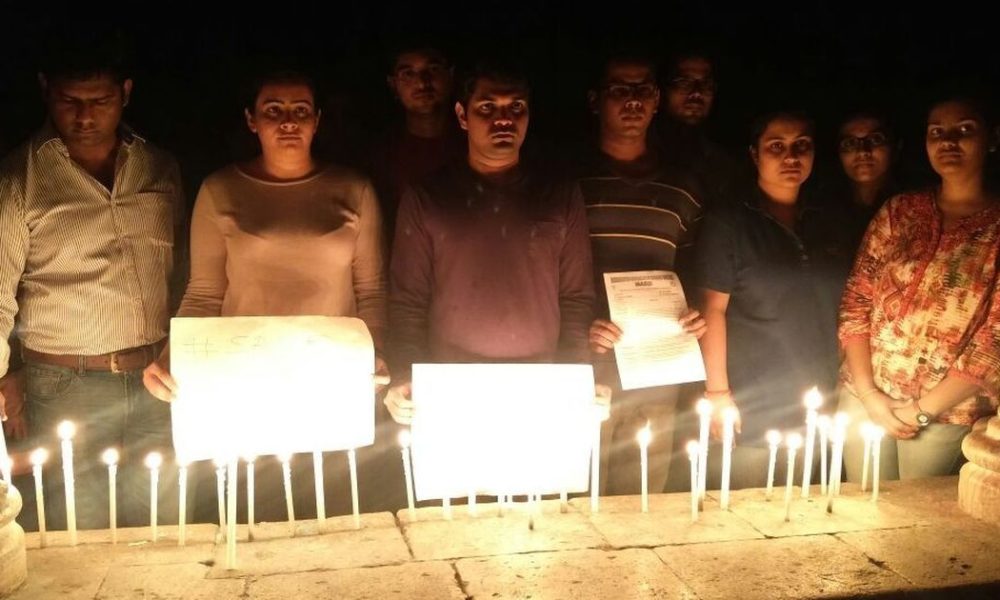
Close on the heels of a series of attacks on doctors by patient’s kin comes a related study. The study says that what’s needed is a well-coordinated communication system and not stringent laws or penalties. The study was prepared by a team of researchers who looked into the poor scenario of doctor-patient relationship in India.
The research was done by the faculties of Navsahyadri Education Society, Pune and Smt Laxmibai Radhakishan Toshniwal College Of Commerce, Akola.
According to the authors, Prof Sachin Divekar and Dr Varsha Sukhdeve, “Most of the (research) papers published on these topics were by the medical people. To some extent, it was inclined towards one group.” It was in this backdrop that they kicked off their research.
In the past three years, over 45 doctors and medical professionals have been victims of violence inflicted by patient’s relatives, in Maharashtra alone.
“Great transformations happen in social, technical and medical field, which dilute the relationship,” said Prof Divekar, pointing out reasons for the poor doctor-patient relationship.
Multiple causes contribute to the situation. The decline of the family doctors, the trend of specialty and multispecialty hospitals, this being the information age and even practices that doctors and patients follow are among them.
The decline of the family doctors
The fall in number of general practitioners is cited as a major cause.
As mentioned in the study, “These GPs, who looked after five or more villages, were taking ample time to discuss cases with the patients. The consultation involved a chat about the problems, medical examination, description of the diagnosis and a feedback from the patient. It was a win-win situation for the doctor and the patient alike, as they shared mutual understanding and trust.”
The experts say that the metal connect disappeared once specialty and superspecialty hospitals came to the fore. “Most of the specialized doctors collaborated with all possible hospitals, and started their own private practices simultaneously. As a result, specialized doctors didn’t have time to listen to their patients carefully,” said Prof Divekar and Dr Sukhdeve .
The problem, according to them, began once treatment and diagnosis became speedy matters. Poor communication was then inevitable between the doctors and patients or their relatives. This often leads to confusion.
Information age
The researchers point out the effects that a well-informed patient may have on the doctor-patient relationship. “Today, patients arriving at a clinic are armed with information they found on web. They want to actively participate in the therapeutic decisions and want all decisions to be informed and intelligent,” says the researchers.
They said that even when doctors dabbled in unethical practices, they went unnoticed because of a lack of knowledge, information, limited income or blind faith in the care givers. The limited number of superspecialty hospitals also catered to this scenario.
“Literacy rate was low. So whatever was told and asked by the doctors was taken as the final word by the patients and their relatives,” said Prof Divekar.
According to the researchers, the major concern of the medical fraternity was the often unreliable nature of medical information on the internet. Doctors began to view such patients as ‘problem patients.’
Disposable income
The rising buying power of the middle-class is yet another key factor that the study recognizes. It’s found that in 2005, Indians spent 7% of their disposable income on healthcare. This rose to 14% by 2009-2010. By 2014-2015 it nearly doubled to 26%.
“With this trend, people are ready to pay higher amount for saving lives of their beloved and in return they expect best possible services. Poor services and negligence flares up the emotion of patients and relatives,” said Dr Sukhdeve.
India’s dismal doctor-patient ratio(6:10,000) is hardly sufficient for the people’s growing needs. “Around 70% population resides in rural areas, where the ratio is six times lower. About 80% doctors, 75% dispensaries and 60% hospitals are located in urban localities,” said Dr Sukhdeve.
Progress in medical technology
The study points out how such advances in medical technology as artificial pulmonary surfactant, special ventilators and neonatal intensive care are seen by patients and relatives as proof for saving life. “
Early and accurate detection doesn’t mean 100% surety of saving a life. Patients and their relatives must understand this. Also, this needs to be communicated clearly by the doctors,” said Prof Divekar.
Consumer rights
Though patients or relatives could move legally against alleged malpractices, in this age of information, for some reason, they seem to think that physical assault is the best recourse. This finds a mention in the study.
The study cites an inept redressal system and also lack of initiatives from the government or the medical fraternity as reasons for the outrage.
“It is the duty of Medical Council of India to look into the issues and introduce a protocol where both the doctor and the patient can seek redressal. Only a handful of cases have been resolved since the enactment of the Medical Council Act, 1956,” said one of the researchers.
The need to change
The researchers also mention the need for doctors to change their attitude. They said that a future doctor, aside from having the medical skills would also need to learn psychology, sociology and acquire man management skills-including listening skills and effective communication.
“We have to develop a system through which we can resolve the issue or discrepancies in the doctor-patient relationship. Passing or implementing non-bailable laws is not going to solve the problem,” said the researchers.
They also mention how at the very least, regional doctors’ associations and patients or social activists could work out solutions.
Image credits: scroll.in
Images may be indicative